Behind the Scenes: Practicing Creative Thinking in Introduction to Studies in Creativity Classes
By Prof. Anna Boshnakova
One of the most effective ways to develop and nurture student’s creativity is to give them the freedom to express themselves through a creative outlet. Creative activities enhance learning, can lead to a positive state of mind, and can develop a set of soft skills necessary for success in school and the workplace.
As a professor teaching cultural anthropology, visual culture, and creative studies courses for the past eleven years, I have observed the academic and mental health benefits of art components in student assignments during my face-to-face classes. The creative process allows students to challenge themselves, control their stress levels, and experience a flow state, which leads to many positive outcomes, such as a sense of accomplishment, resilience, self-confidence, and happiness.
This year, the coronavirus pandemic has put all our lives on hold, challenging us to find more than ever unconventional ways of managing fear and uncertainty, trying to make things work.
Since our classes are taught online, I decided to integrate a series of creative activities tailored specifically for a virtual teaching platform. My goal was to help my students find inspiration and motivation and guiding them to achieve even more than what they might think is possible in this time of uncertainty. Here are some of their amazing and talented visual and written reflections.
Creative activity example 1: “My definition of Creativity”: Draw a visual metaphor to capture the essence of complex academic theory.
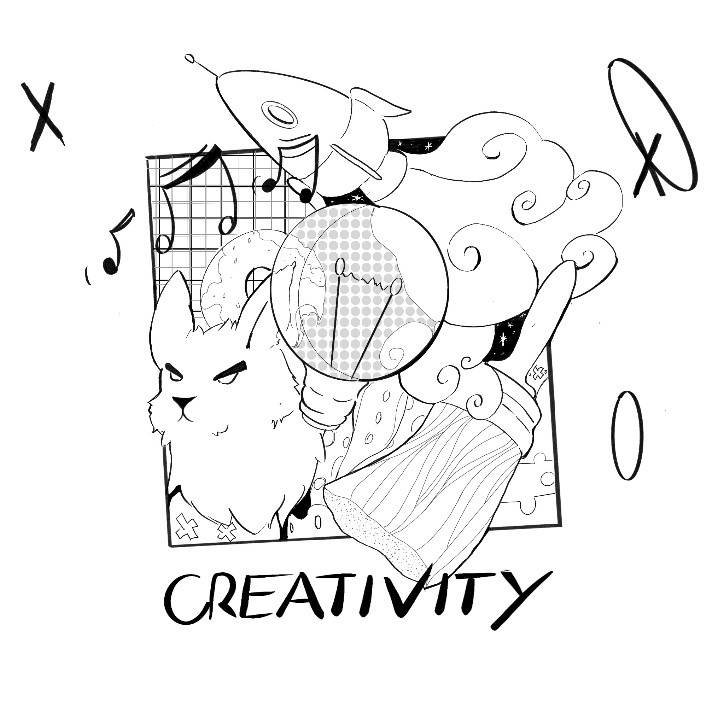
As part of reviewing the concept of creativity, students were asked to draw their definition of creativity and then to explain it. For Chester Cari, a student in the Computer Science degree program, creativity represents the process of generating ideas from our imagination, which we can then use to solve problems, or as a means of expressing ourselves. “In my visual metaphor – Chester explains – I have a light bulb that represents ideas, a paintbrush for artists, music notes for musicians, a rocket ship for science/technology, a doughnut for chefs, and a dog for Brian… Everyone is a creative person and creativity can be found in all kinds of places. To represent this concept, I tried to make the light bulb look like earth. I also drew “X” and “O” outside of the square to represent “thinking outside the box”. Ideas are always original and can come from combining existing things or previous experiences together into creating something new…”
Creative activity example 2: Associations and Analogy: Students are introduced to Banksy – an England-based postmodernist and his impermanent, tempered with dark humour 3D street art. With his examples in mind, they are challenged to create something unique by association and analogy, applying the postmodern approaches of pastiche, appropriation, parody, and reflection. They have to give a title of their picture/installation and write a short story.
* * * * *
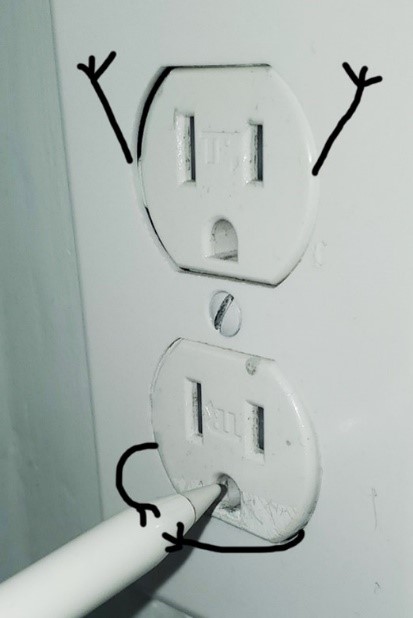
I’m shocked by Riselda Zani (Interaction Design)
“What are you doing!?”
“This apple pencil needs charging! I need to give it power.”
“No! You can’t charge it that way.”
An outlet is ‘shocked’ by the other outlet’s actions.
The plug below has an ‘O’ opening and fits an apple pencil in perfectly.
The moral: Just because something fits, doesn’t mean that it should be put in.
* * * * *
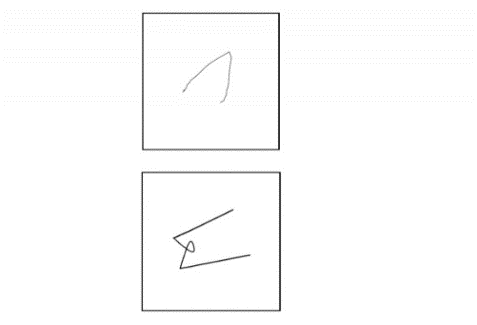
Creative activity example 3: Associations and Improvisation: Students are introduced to one of the most iconic elements of The Torrance Test of Creative Thinking (TTCT), known as The Incomplete Figure Test. In this drawing challenge, students are given the following shapes and then asked to complete the images. Building on that, students are asked to improvise and tell a short story based on the complete images.

The Innovative Scientist by Ammar Khan, (Computer Science)
In the year 2050, a crazy and impulsive scientist decided to bring the idea of jetpacks to life. It all started with his love for rocket science. He put himself through school to become an engineer and a scientist. Finally, after getting his degree he brought his dream to life.
Selfish Fish by Ammar Khan (Computer Science)

Once upon a time, there was a very selfish fish. None of the fish in the lake liked her because she would snatch the food that other fish would find. Many fish started starving to death. Until one day, a worm was spotted; the selfish fish, as always, raced for the food. As she was about to bite it, she yells “I won!” right before she lost.
*
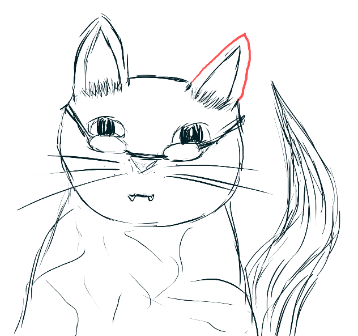
Professor Meow by Tany Dourev (Interaction Design)
This is Professor Meow, ready to teach his students about the history of the feline. Sadly, he requires glasses to see his class, but you must say that they do look very stylish on him – his class disagrees, however. No worries, he can give them a low mark as payback.
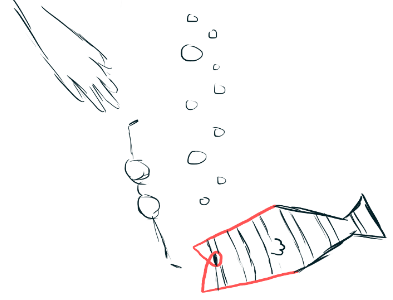
Oooh… Shiny! by Tany Dourev (Interaction Design)
This is Oli. Oli is a curious fish. Oli likes shiny things and when he sees something shiny, he must swim over to nibble on it and see what it is. Today, Oli sees glasses fall into his pond. Oli must nibble, he thinks excitedly, but will they taste good?
*
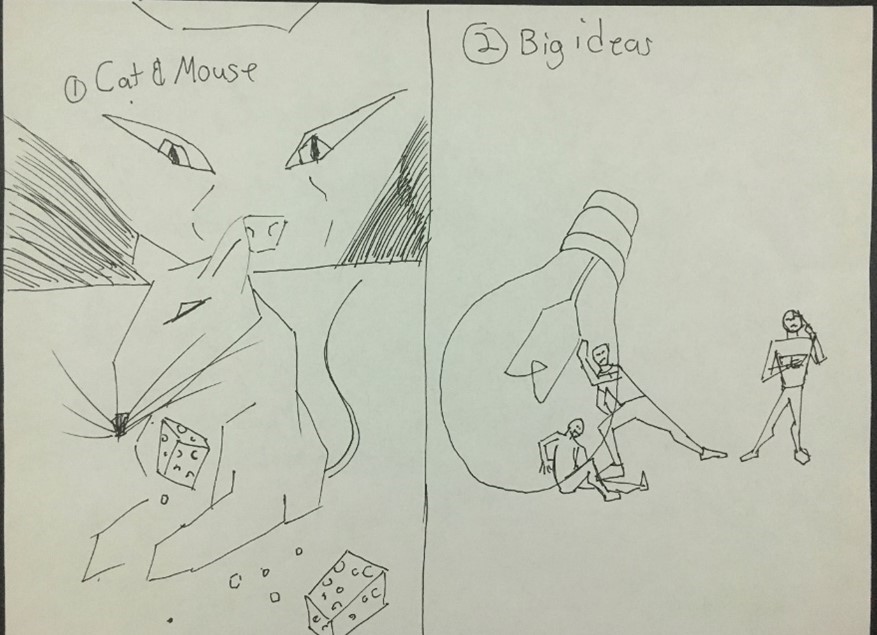
Cat and Mouse by Katie Coward (Illustration)
The house was quiet, it was the perfect time to sneak a snack. The mouse crept across the floor to the table leg. It carefully climbed to the top, spurred on by the idea of its prize. It was unaware of the eyes following him.
Big Ideas by Katie Coward (Illustration)
Sometimes big ideas are difficult to put into motion. Especially when you’re an inch tall.
*
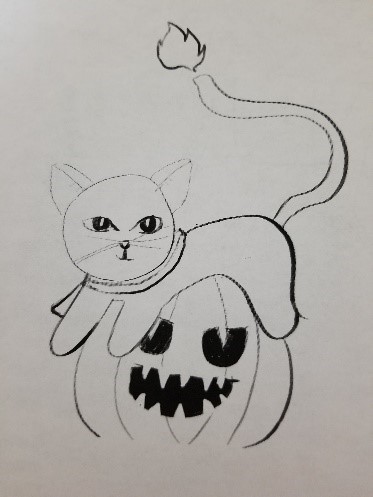
Magic Cat on Pumpkin by Riselda Zani (Interaction Design)
A magical cat with the power of fire decides to sit down on top of a carved pumpkin to prevent anyone from lighting it up. He has his tail on fire to threaten anyone or even dare them to come too close. That pumpkin has value to the cat. Why? No one knows yet but it’s rumored to be the head of an evil spirit.
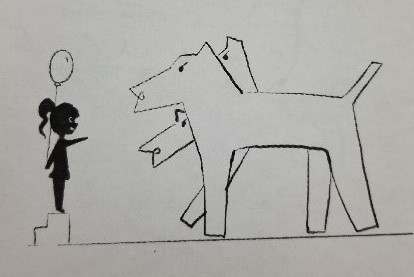
Can I pet it? by Riselda Zani (Interaction Design)
The young goddess is on a trip to the underworld with her parent at the zoo. She is asking if she may pet the three-headed hellhound. She has never faced anything that has made her fearful. Therefore, in her eyes, she sees the hell hound like any other cute puppy.
*
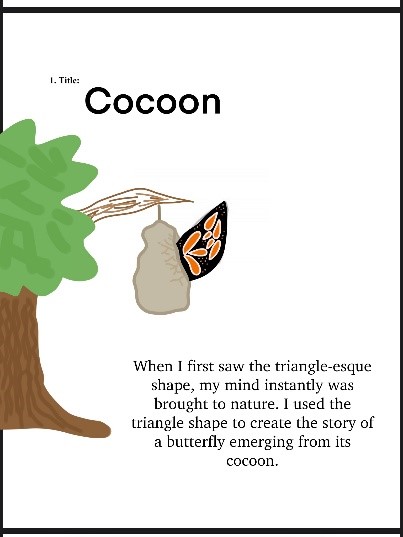

* * * * *

Creative activity example 4: SCAMPER. Students are challenged to draw all changes that can make this toy rabbit more fun to play with.
“All these features make the bunny more fun to play with because the child can now relate to,” said Katelyn Littlejohns, a student in the Bachelor of Photography program.
* * * * *
Creative activity example 5: Comic strip. Students are challenged to finish the lines by drawing images interconnected in a story (a comic strip). Then they have to write a short narrative that includes the setting, characters, and plot hidden behind the images.
Pigeon Boards a Boat by Katelyn Littlejohns (Photography)
Parker the pigeon is having an average day, doing pigeon things as all pigeons do. He decides to fly around and look for something fun to do. Eventually, he arrives near the lake and spots a boat as the perfect adventure for the day. As he approaches, he notices the crew on board and finds himself flying closer to one of the people with their arms stretched out. Parker lands on the man’s arm, thinking it is a nice spot to relax for a moment. Oh, how wrong he was, as the man becomes startled! The man jumps and slips backward, falling to the ground in fright. Parker hops to the ground effortlessly and watches in surprise as the man yelps in pain. Parker then decides maybe this was not the best idea, and take off for the sky again, leaving the man unimpressed with the odd event that just occurred. Parker thinks to himself, “that is enough adventuring for one day, back to picking crumbs off the sidewalk.

In Katelyn’s own words: “Throughout this course, I have learned a great deal about the topics of creativity, including how to develop my creative potential. In week one we learned the basics of creativity, such as the fact that creativity comes from problem-solving. Throughout history, there has always been the need to innovate and make human lives easier or better, and this is where creativity became important. Creativity has become a necessity for everyday life, not just the arts – we are constantly facing problems and we use our creative minds to find solutions.
It was also mentioned that creativity is an element of curiosity and imagination, as humans constantly want to make their lives fun and exciting. I think this is a huge reason why the arts have become so important in our lives because we are always looking for a laugh and a distraction from everyday dullness. I learned that creativity is more than just having talent, rather it is being able to work with your brain to create unique ideas and develop them. Furthermore, it is using specific techniques to develop ideas, such as using analogies, metaphors, or forced connections. I learned that creativity can be developed just like any other skill, and I hope to continue building this skill even after this course ends. I may not be a great drawer, but my mind is much more creative than I thought; my creativity continues to grow with each day and artistic experience.
Being creative doesn’t always have to be hard work, it can be as simple as just for a fun time and be completely sloppy – it will still be a creative piece. I was introduced to the creative process, which is much more in-depth than I had imagined. The three steps of having an idea, making the product/ solution, and the final product each have specific elements that I never have known about before taking this course. The cognitive process involves using critical thinking to clarify what the problem is and to identify possible solutions. The behavioural process is when you further the idea in your head and create a plan on how to execute the idea by using the tools of creativity. Finally, the affective process is the testing and fixing the product until it is ready for use – this includes emotional aspects.
I furthered my understanding of the creative press, as well as why it is so important for my creativity. Having a stress-free space where I can let my creativity flow freely is essential for making the best possible work I can, as it allows for more focus and productivity. Although the creative press is more than just a quiet room, it involves physical sensations such as temperature and comfortability. This is because these sensations directly relate to how someone feels, so if the environment is not quite comfortable then the person will feel a bit uncomfortable and therefore work less effectively.
Throughout this final assignment, I have shown my ability to use multiple creative characteristics. One of the most useful characteristics of creativity that I used in this report was the use of imagination, as I had to play with certain parts of the assignment to think of a solution. For example, I had to use imagery to think of ways the bunny could be more fun to play with. Similarly, I used imagery to do the unfinished comic panels, which was a fun way to come up with a story. To make a cohesive story, I had to replay the situation over and over in my head and consider ways that it could continue – this was difficult at some points, but super fun. A smaller characteristic that I used was curiosity, when I had to reframe the bunny question to ask “what are some interesting ways that toy companies currently use to make their toys,” as well as “what features of a toy did you enjoy as a kid?” These questions helped me think deeper about the possibilities, as well as provide a reference point as to why the feature is more fun.
I lightly used humour to help create a more enjoyable comic, as everyone likes to laugh when looking at comics. Persistence was also an important tool used when working on this assignment, as I had to push myself with the write-ups to ensure all the content needed was present. I encouraged myself to continue thinking of comic ideas when some of my ideas did not fit the story, and this definitely helped to create a fluent story in the end.
Concentration was important when I became overwhelmed because I could take a break and then come back feeling refreshed and ready for another round of working hard. It is extremely important to spread the workout, or at least proof your work before finalizing it – this is because it allows for a new outlook on the work and for any changes that would improve the work.”

